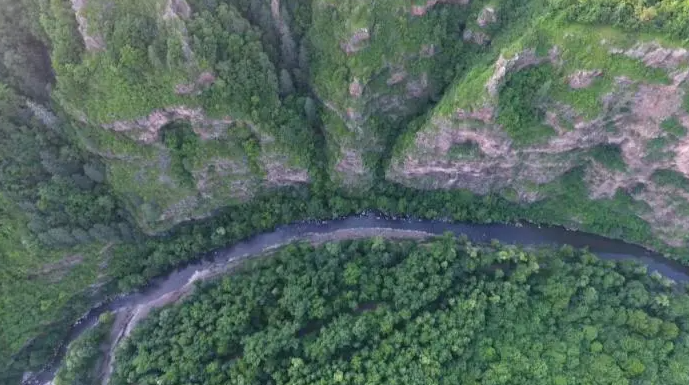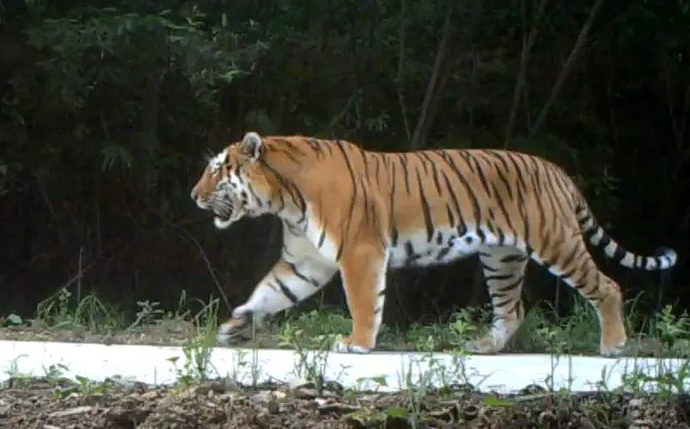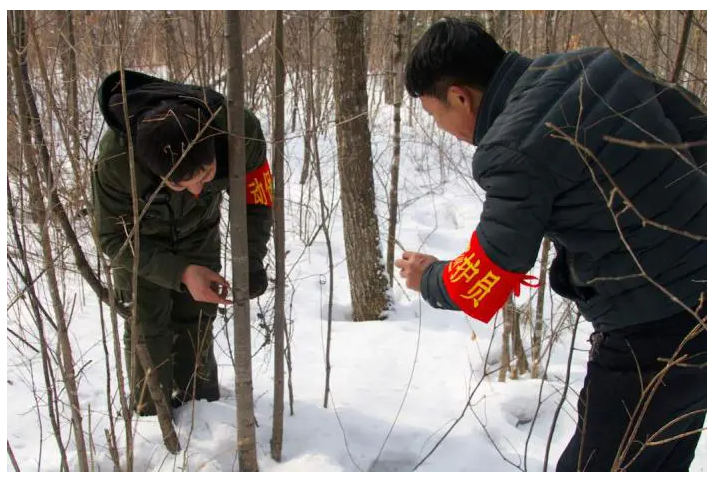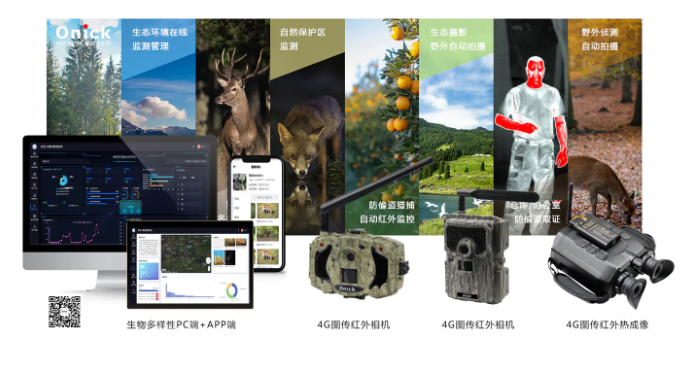Tigers roar in the mountains and leopards leap in the green rivers. As a predator at the top of the food chain, the survival status of the Siberian tiger directly reflects the dynamics of the regional ecosystem and is an indicator of the local ecological environment and ecological balance. Protecting the Siberian tiger is also protecting biodiversity and improving the ecological environment on which people depend for survival.
The Northeast Tiger and Leopard National Park covers an area of 14,100 square kilometers. It is not easy to protect such a huge forest ecosystem. There are such a group of people who have devoted themselves to the wild for a long time to protect wild animals and the natural environment. They are the rangers who stick to every corner of the Northeast Tiger and Leopard National Park. Different footprints are heading for the same goal, and different faces are sticking to the same original intention.

"When thirsty, drink frozen water, and when hungry, eat bread. Walk deep and shallow in the snow, and find that the cotton pants are frozen when I get home. Because I often work alone in the mountains and forests where few people go, I was almost detained by the border guards as a cross-border person." This is the work of Li Gang, deputy director of Chaoyanggou Forest Farm for many years.
With the full-time monitoring of the integrated ground-air monitoring system, new situations in the national park can be quickly obtained, but many specific tasks still need to be completed by the rangers in the dense forest.
In order to capture information about wild Northeast tigers and leopards, Li Gang often visits former hunters and border residents, and when he hears about the activities of Northeast tigers and leopards, he immediately goes to check. In 2010, he successfully collected the feces and footprints of a wild Siberian tiger. In July of the same year, when he went up the mountain to maintain the camera, he found that a camera had successfully photographed a male Siberian leopard. This was the first physical photo of a wild Siberian leopard taken in Heilongjiang Province in 30 years. For a time, Chaoyanggou Forest Farm was on the hot search list for tiger and leopard protection.

During the patrol process, you will often "encounter" wild animals. Song Yuguo has been engaged in monitoring and patrol work in Nuanquanhe Forest Farm for 12 years. He recalled the experience of meeting the big black bear and smiled and said, "I was scared enough, and it was scared too." During the run, the GPS and camera were lost. When I went to look for them the next day, the GPS had been smashed beyond recognition and could not be used, and the camera has not been found yet. The seemingly simple work is actually very complicated and arduous, and even dangerous.
"Protecting animals is protecting ourselves. Every form of life has its necessity and meaning. Take wild boars and roe deer as examples. Without them, the food chain of Siberian tigers and leopards will be broken, and the entire population will be shaky. If there are no Siberian tigers and leopards, the herbivore elimination mechanism will be lost, the vegetation will be greatly damaged, and the entire forest ecosystem will lose balance.
Habitat restoration is a very complex and arduous task. In the forest land clearance work, Mao Yunxing, director of the Resource Forestry Department of Daxinggou Forestry Bureau, conducted on-site verification on each forest farm and plot to ensure that the state-owned forest land is not encroached. According to Mao Yunxing's statistics, he has led his colleagues to complete the forest land clearance task of 3401.34 hectares, the forest restoration task of 419.61 hectares, and the area included in the second round of contracting is 2981.73 hectares.
How can local residents develop if the forest is returned to tigers and leopards? The conflict between humans and animals is an unavoidable problem in the construction of ecological civilization. The Northeast Tiger and Leopard National Park Administration has issued more than ten support and guarantee policies to gradually eliminate the contradiction between humans and animals and promote regional transformation and development.

"Wild animal injury compensation is an important task of the reserve management bureau, which is related to the effective implementation of national policies and the vital interests of the people. Jiao Linwang of the Tianqiaoling Branch of the Northeast Tiger and Leopard National Park Administration has a deep understanding of this work.
Publicity is crucial to the construction of the Northeast Tiger and Leopard National Park. Liu Guoqing from the Hunchun Municipal Bureau is a post-90s who is good at using new media tools. He likes to take photos and videos during patrols and edit the materials into videos. Since 2016, Liu Guoqing has posted more than 80 articles on social media and released more than 130 patrol short videos. He uses new media to promote, let people know the channels of patrol work, and also contribute to the promotion of wildlife protection.
Daily clearing, winter supplementary feeding, combating poaching... Whether it is midsummer or winter, the patrollers shuttle through the dense forests and track and search for shadows, just to protect tigers and leopards. At present, 10 wild Siberian tiger cubs and the population of more than 50 have been monitored in the Northeast Tiger and Leopard National Park, and 7 wild Siberian leopard cubs and the population of more than 60 have been monitored. Green mountains are evergreen, tigers and leopards live, and the guardians in the mountains and forests and the wild animals they protect are interwoven into a harmonious landscape in nature.

The onick visualization cloud platform processing system uses technical means such as big data and cloud storage, combined with hardware equipment such as ground infrared cameras and monitoring means such as mobile Internet, to form a visualization platform and 4G Internet monitoring system to break the information island.
1. Build a visualization platform interconnection, visualization management system + mobile phone terminal to achieve mutual cooperation between patrolmen and managers, timely information exchange, and reasonable layout of regional cameras.
2. The visualization platform is interconnected, displaying camera information, coordinates, numbers, temperature and humidity, extracting photo time and location information, realizing data statistical analysis and storage, clear functional area boundaries, and user function management.
3. 4G Internet monitoring system, the data collected by Onick infrared cameras, infrared thermal imaging, night vision devices and other 4G image transmission equipment are uploaded to the Onick visualization cloud platform through the mobile Internet, automatically archived and classified, AI intelligent recognition, and the attributes such as time, space, animal and plant characteristics are associated to realize the ecological value assessment of the protected area and visualization management.
4. Multi-dimensional and stereoscopic display of big data space breaks down information silos, couples various types of scattered information, and makes data visible; statistical analysis provides data support and decision-making basis for ecological value assessment and ecological diversity of protected areas.

It is hoped that the traditional methods of forest rangers combined with modern high-tech monitoring methods will provide more convenient and efficient patrol inspections, monitoring and early warning, species resource protection, field investigations, ecological restoration and other application services for nature reserve management, and strive to solve the problems of information islands, supervision difficulties, untimely problem discovery, and heavy workload in nature reserve management. Contribute to the monitoring of biodiversity and the establishment of a sound wildlife resource monitoring system!

